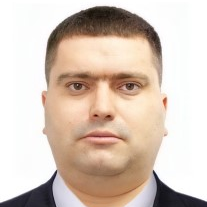Fractional Evolutionary Equations and Modeling of Dissipative Processes
A special issue of Fractal and Fractional (ISSN 2504-3110). This special issue belongs to the section "Mathematical Physics".
Deadline for manuscript submissions: closed (1 March 2023) | Viewed by 16680
Special Issue Editors
Interests: fractional calculus; fractional differential equation; mathematical modeling
Special Issues, Collections and Topics in MDPI journals
Interests: fractional calculus; fractional oscillators; fractional dynamics; numerical methods; mathematical modeling
Special Issues, Collections and Topics in MDPI journals
Special Issue Information
Dear Colleagues,
The Special Issue is devoted to the application of fractional-order evolutionary differential equations to the description of dissipative systems and processes. Generally, a dissipative system is understood as any open (non-conservative) system located far from the state of thermodynamic equilibrium. Dissipative processes include various irreversible thermodynamic processes, mass, electrical and heat transfer, mechanical motion of damped systems, chemical reactions, radiation and absorption of electromagnetic waves, etc. Particular attention will be paid to the study of initial and boundary value problems for partial differential equations of fractional order, which are the basis for mathematical models of dissipative systems and processes.
Prof. Dr. Arsen V. Pskhu
Prof. Dr. Roman Parovik
Guest Editors
Manuscript Submission Information
Manuscripts should be submitted online at www.mdpi.com by registering and logging in to this website. Once you are registered, click here to go to the submission form. Manuscripts can be submitted until the deadline. All submissions that pass pre-check are peer-reviewed. Accepted papers will be published continuously in the journal (as soon as accepted) and will be listed together on the special issue website. Research articles, review articles as well as short communications are invited. For planned papers, a title and short abstract (about 100 words) can be sent to the Editorial Office for announcement on this website.
Submitted manuscripts should not have been published previously, nor be under consideration for publication elsewhere (except conference proceedings papers). All manuscripts are thoroughly refereed through a single-blind peer-review process. A guide for authors and other relevant information for submission of manuscripts is available on the Instructions for Authors page. Fractal and Fractional is an international peer-reviewed open access monthly journal published by MDPI.
Please visit the Instructions for Authors page before submitting a manuscript. The Article Processing Charge (APC) for publication in this open access journal is 2700 CHF (Swiss Francs). Submitted papers should be well formatted and use good English. Authors may use MDPI's English editing service prior to publication or during author revisions.
Keywords
- diffusion wave equations
- direct and backward problems
- problems without initial conditions
- mathematical modeling of microseisms
- Sel’kov fractional dynamical system
- distributed order fractional diffusion
- memory density
- Hurst exponents
- Fractional Riccati equation
- variable order fractional derivatives
- regular and chaotic regimes
- Dubovsky’s fractional dynamic system






